
Does Invisalign Work — Pros And Cons Of Clear Aligners
Curious about Invisalign but not sure if it’s the right treatment plan for you? You’re in the right place. We’re the experts in clear aligner orthodontic systems. In this guide, we’ll be exploring the Invisalign treatment plan and the pros and cons of this system. By the end of the guide, you should be one step closer to deciding if Invisalign orthodontics is right for you.
What is Invisalign?
Invisalign is a particular brand of clear plastic aligners. It was the first orthodontic system to offer removable plastic aligners instead of fixed wires and brackets. The company launched in 1997, and in 2017, their patents expired. This paved the way for lots of other companies to start offering their version of the clear plastic aligner. Invisalign was the original, but there are now many options available.
Does Invisalign Work?
Yes, with over 14 million happy patients across the globe Invisalign is a proven and effective way of treating a variety of dental issues when used correctly and under the guidance of a qualified dental professional.
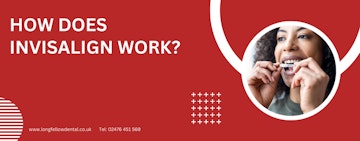
How does Invisalign work?
Invisalign aligners are very different to traditional fixed braces. Instead of brackets and wires, this orthodontic system uses a set of clear plastic aligners, similar to retainers. These lightweight but strong plastic aligners apply gentle pressure to the teeth to help move them into the correct position.
But this is only one part of the treatment plan. Perhaps the most innovative part starts with the way your treatment plan is prepared.
The iTero scanner is used to scan your teeth and whole mouth to create a 3D image. This then plots the ideal movement of each tooth to create your series of aligners. The aligners are laser cut to create a perfect fit for your teeth, ensuring minimal discomfort.
This scan also creates a mock-up view of what your smile could look like at the end of the treatment plan. If you’re on the fence about treatment because you are struggling to see how orthodontics could improve your smile, seeing the potential results could be just the thing you need to convince yourself to start treatment.

Invisalign treatment explained
At the start of your treatment plan, you will receive your full case of numbered aligners. You will be responsible for sticking to your treatment plan and changing the aligners every 10-14 days, as outlined in your plan.
You wear the aligners for 22 hours a day, removing them only to eat, drink anything other than water, and brush your teeth. It’s important to have the self-discipline to keep wearing the aligners every day, as the treatment won’t work if you aren’t wearing them often enough.
Invisalign for Teens includes wear indicators, so your dentist can see if you’re wearing them often enough.
Every few weeks, you will switch to the next aligner in the case. You should hang on to the previous aligner in case you misplace one and need something to keep your teeth aligned until you can get a replacement.
The aligners may be paired with attachments, which are small dots that are bonded to your teeth. This allows the aligners to get a better grip on your teeth. Precision wings can help to get a better grip on rear teeth.
When you come to the end of your treatment plan, you can switch to a nighttime retainer to help keep your teeth in the perfect alignment.
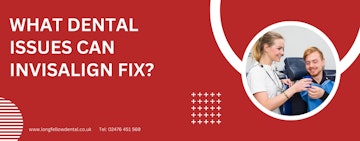
What Dental Issues Can Invisalign Fix?
Overcrowding
Overcrowding occurs when there isn't enough space in the jaw to accommodate all of a person's teeth. This can lead to teeth growing at odd angles or overlapping one another. Some common causes of overcrowding include genetics, early loss of baby teeth, or late eruption of adult teeth.
How Invisalign Addresses Overcrowding
Invisalign clear aligners can effectively treat mild to moderate overcrowding. By applying gentle pressure, the aligners gradually shift teeth into their proper positions, creating more space and alleviating overcrowding.
Gaps Between Teeth
Gaps between teeth, also known as diastemas, can be caused by a variety of factors, such as genetics, small teeth in relation to jaw size, or habits like thumb-sucking. Gaps can also form due to a mismatch between the size of the jaw and the teeth.
How Invisalign Addresses Gaps
Invisalign aligners can effectively close gaps between teeth by applying consistent pressure to guide teeth into their ideal positions. The customised treatment plan ensures that the aligners work to close gaps evenly and safely, resulting in an improved smile and better overall oral health.
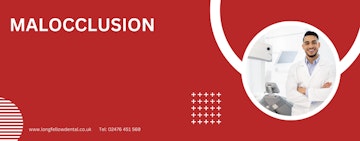
Malocclusion
Malocclusion refers to the misalignment of teeth when the jaws are closed. There are several types of malocclusion, including overbite (upper teeth overlap the lower teeth), underbite (lower teeth overlap the upper teeth), and crossbite (upper and lower teeth don't align correctly when the mouth is closed).
How Invisalign Addresses Malocclusion
Invisalign clear aligners can treat various types of malocclusion, depending on the severity. By using a series of aligners, Invisalign gradually corrects the misalignment and helps achieve a more balanced bite. This not only improves the appearance of the smile but also promotes healthier jaw function and reduces the risk of dental issues caused by an uneven bite.
Bite Issues
Bite issues refer to the misalignment of the upper and lower teeth when the mouth is closed. Some common bite issues include open bite (when the front teeth don't touch), deep bite (excessive overlap of the upper and lower front teeth), and edge-to-edge bite (upper and lower front teeth meet edge-to-edge without proper overlap).
How Invisalign Addresses Bite Issues
Invisalign treatment can be an effective solution for correcting various bite issues. The customised aligners work to adjust the position of the teeth, helping to create a more balanced bite. As a result, patients can enjoy improved oral health and a more confident smile.
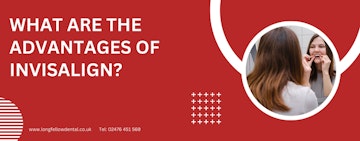
What are the advantages of Invisalign?
Practically Invisible
People typically turn to Invisalign because they want straight teeth but they don’t want to wear aligners that are too obvious. The main advantage of Invisalign is that the aligners are made from clear plastic which makes them basically invisible to anybody else.
No need to change your diet
Invisalign aligners are removable, which means you can still enjoy your favourite foods and you don’t have to change your diet when you undergo treatment.
Flexibility
Another reason that people love this treatment plan is that it is flexible. So if you have an important meeting at work and don’t want to wear your aligners, you can quickly take them out and replace them afterwards. Provided you’re wearing them for around 22 hours per day, this shouldn’t derail your treatment plan.
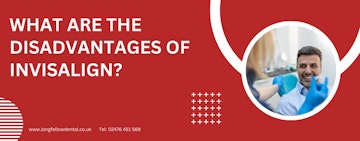
What are the disadvantages of Invisalign?
There are a few things that might hold you back from seeking out this particular treatment.
Price
As there are so many benefits over traditional fixed braces, the system is more expensive. However, many dentists will offer interest-free credit to enable you to spread the cost of treatment.
Personal Responsibility
Another disadvantage is that you need to be disciplined with your treatment. If you are forgetful or worry about losing things, this might not be the right plan for you. For the treatment to be successful, you need to wear your aligners for around 22 hours per day. If you’re likely to forget, fixed braces might be better for you.
Ready to start treatment?
The first step to starting Invisalign treatment is to book a consultation. This will allow us to determine if you are a suitable candidate and then scan your teeth to start planning your treatment journey.

Call us to make your appointment
Interest-free credit available
Worried about the cost of treatment? We offer financing plans to allow you to spread the cost.